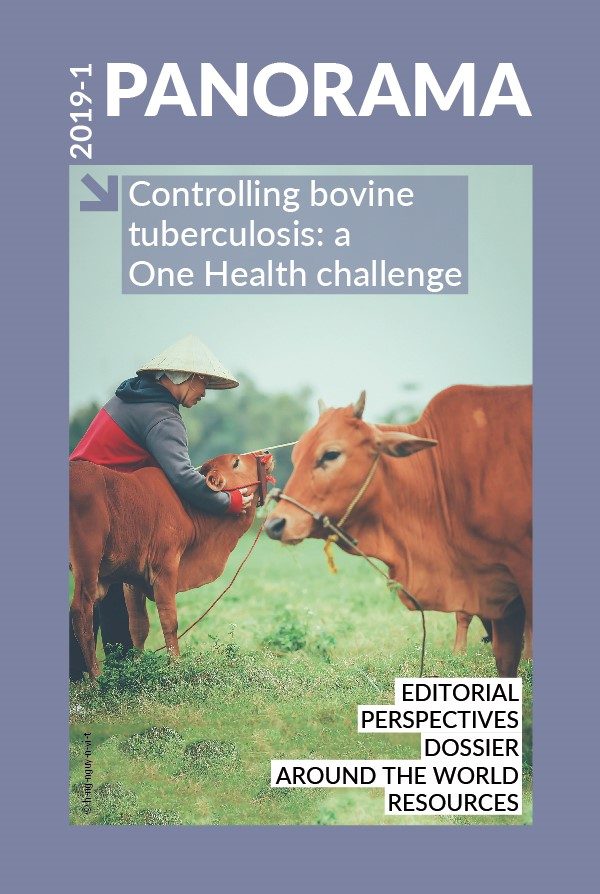Perspectives Posted on 2019-04-30 15:49:24
Accelerating bovine tuberculosis control in lower-income settings
Keywords
Authors
Nick Juleff(1)*, Vivek Kapur(2), Shannon Mesenhowski(3), Purvi Mehta(4) & Samuel Thevasagayam(5)
(1) Senior Programme Officer, Agricultural Development, Bill & Melinda Gates Foundation, Seattle, United States of America.
(2) Professor of Microbiology and Infectious Diseases, Huck Distinguished Chair in Global Health, Associate Director Huck Institutes of Life Sciences, The Pennsylvania State University, Pennsylvania, United States of America.
(3) Programme Officer, Agricultural Development, Bill & Melinda Gates Foundation, Seattle, United States of America.
(4) Deputy Director and Head of Asia, Agricultural Development, Bill & Melinda Gates Foundation, Seattle, United States of America.
(5) Deputy Director, Agricultural Development, Bill & Melinda Gates Foundation, Seattle, United States of America.
* Corresponding author: nick.juleff@gatesfoundation.org
The designations and denominations employed and the presentation of the material in this article do not imply the expression of any opinion whatsoever on the part of the OIE concerning the legal status of any country, territory, city or area or of its authorities, or concerning the delimitation of its frontiers and boundaries.
The views expressed in this article are solely the responsibility of the author(s). The mention of specific companies or products of manufacturers, whether or not these have been patented, does not imply that these have been endorsed or recommended by the OIE in preference to others of a similar nature that are not mentioned.
In stark contrast to high-income countries, where bTB is largely controlled in livestock and therefore less important for public health, similar control programmes have not been implemented in most LMICs. This, despite growing evidence of a high and widespread bTB prevalence in LMICs; for example, in Africa and India [1, 2]. Given both the close association of humans with cattle, and the fact that milk is often sold unprocessed in LMICs, there is also considerable risk of zoonotic transmission. However, because of technical and logistical constraints, the true burden of zoonotic tuberculosis in LMICs remains unknown.
Herein lies the key problem: low awareness of bTB means that support for its control remains limited; and limited support means that few resources are available to build awareness. Hence, in LMICs, where disease has the greatest negative impacts, bTB control efforts remain piecemeal and insufficient.
The true burden of zoonotic tuberculosis in low- and middle-income countries remains unknown
Despite these challenges, we find cause for optimism with a confluence of emerging factors that are likely to increase awareness and provide a renewed urgency to drive bTB control in LMICs.
These factors include:
a) WHO’s End Tuberculosis Strategy, and the prioritisation of zoonotic tuberculosis at the global level, along with the launch of the first zoonotic tuberculosis roadmap;
b) recognition that the dairy sector in Africa and India is rapidly transitioning and, while intensification of dairy production in LMICs increases bTB risk, it also provides opportunities for novel interventions;
c) strengthening partnerships between donor organisations, multinational institutions, pharmaceutical industries, dairy organisations, and the governments of countries in which tuberculosis is endemic. Such multidisciplinary, One Health partnerships are essential to promote integrated research, surveillance and control programmes, and the development of evidence-based policy frameworks to accelerate bTB control, improve animal productivity, and protect human health.
http://dx.doi.org/10.20506/bull.2019.1.2911
References
- Müller B., Dürr S., Alonso S., Hattendorf J., Laisse C.J., Parsons S.D., van Helden P.D. & Zinsstag J. (2013). – Zoonotic Mycobacterium bovis–induced tuberculosis in humans. Emerg. Infect. Dis., 19 (6), 899–908. https://dx.doi.org/10.3201/eid1906.120543.
- Srinivasan S., Easterling L., Rimal B., Niu X.M., Conlan A.J.K., Dudas P. & Kapur V. (2018). – Prevalence of bovine tuberculosis in India: A systematic review and meta-analysis. Transbound. Emerg. Dis., 2018, 1–14. https://doi.org/10.1111/tbed.12915.












